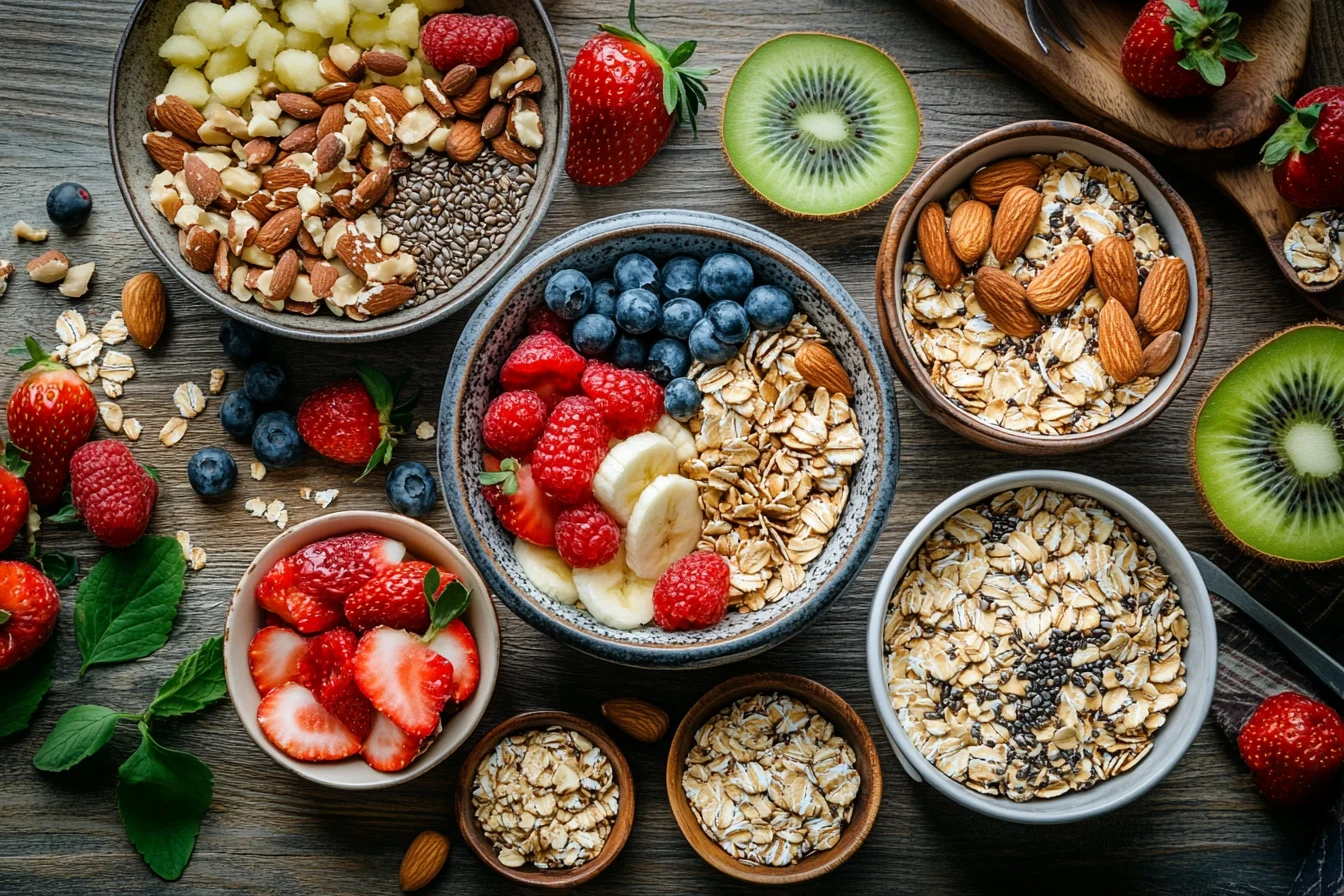Which cereal is the healthiest? With so many cereal options on the shelves, it’s easy to feel overwhelmed. From sugary, colorful boxes to plain whole grain blends, not all cereals are as healthy as they claim. Buzzwords like “natural” or “heart healthy” can be misleading. The right cereal can support energy, digestion, and overall wellness. This guide explains what makes a cereal truly healthy, highlights top nutritionist recommended picks, and offers smart label reading tips, whether you’re focused on weight loss, blood sugar, or simply eating cleaner.
Table of Contents
Understanding What Makes a Cereal “Healthy”
To pick a nutritious cereal, it helps to know what truly matters. Buzzwords like “natural” or “whole grain” on packaging can be misleading. In this section, we’ll break down the key components of a healthy cereal, like whole grains, added sugars, fiber, protein, and essential nutrients.
The Role of Whole Grains in Breakfast Cereals
Whole grains are the backbone of a healthy cereal. Unlike refined grains, they keep all parts of the grain, bran, germ, and endosperm, making them rich in fiber, B vitamins, iron, magnesium, and antioxidants.
Look for cereals where “whole grain” is listed first in the ingredients. That signals a less processed, more nutritious product. Options like plain shredded wheat, old fashioned oats, and sprouted grains are great picks.
Diets high in whole grains may lower the risk of heart disease, diabetes, and obesity, according to the Whole Grains Council.
Added Sugar: The Sneaky Ingredient to Watch Out For
Added sugar is one of the biggest culprits in so called “healthy” cereals. Some contain 12–18 grams per serving, about the same as a candy bar.
The American Heart Association advises limiting added sugar to 25 grams daily for women, 36 grams for men, and even less for kids.
Check the “Added Sugars” line on the label. Healthier cereals typically have under 5 grams per serving, some have none. Watch for sneaky sugars like cane sugar, brown rice syrup, or fruit juice concentrate.
Even natural sweeteners like honey or maple syrup can raise blood sugar. Try adding fruit like banana or berries for a touch of sweetness instead.
Fiber, Protein, and Key Nutrients to Look For
Healthy cereals don’t just skip the sugar, they deliver fiber, protein, and important vitamins and minerals too.
Fiber: Go for at least 4–5 grams per serving. It supports digestion, weight control, and heart health. Look for oats, flaxseed, bran, or psyllium.
Protein: Aim for 5 grams or more. It helps with satiety and blood sugar control. Nuts, seeds, or added plant based proteins are good sources.
Vitamins & Minerals: Many cereals are fortified with nutrients like B12, iron, folic acid, and vitamin D. Fortified or not, the best cereals offer real nutrients from whole ingredients.
In short, healthy cereals are made with whole grains, low in added sugars, and packed with fiber, protein, and nutrients. Learn to read labels, and you’ll shop smarter every time.
Top 10 Healthiest Cereals Ranked by Nutritionists
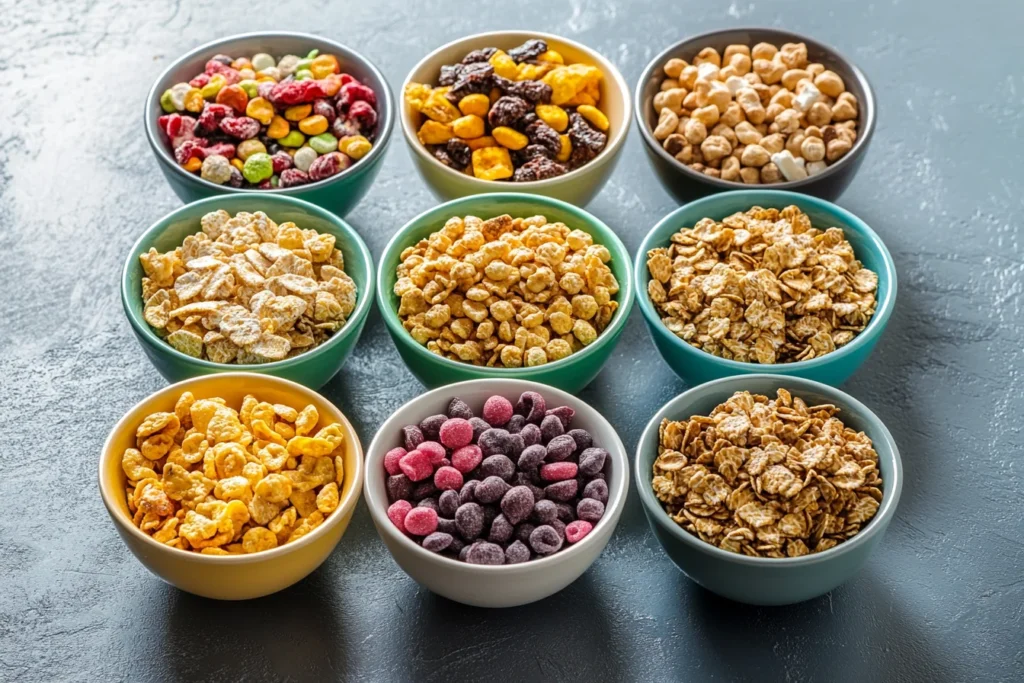
Not all cereals are created equal, and some deliver exceptional health benefits while still tasting great. Nutritionists agree that the healthiest cereals offer a balance of whole grains, fiber, protein, and minimal added sugar. Below is a list of the top 10 cereals that meet those criteria, based on both expert recommendations and clean ingredient lists.
1. Ezekiel 4:9 Organic Sprouted Cereal
Why it’s healthy:
Ezekiel 4:9 stands out as one of the cleanest and most nutrient dense cereals on the market. Made from sprouted whole grains like barley, lentils, millet, and spelt, it contains no added sugar, no preservatives, and is packed with protein and fiber. Sprouting also improves nutrient absorption and makes the grains easier to digest.
- Fiber: 6g
- Protein: 8g
- Sugar: 0g
- Best for: High protein, plant based diets
2. Bob’s Red Mill Old Country Style Muesli
Why it’s healthy:
This traditional Swiss style muesli is made from whole grain rolled oats, wheat, raisins, sunflower seeds, almonds, and dried fruit, without added sugar. It’s minimally processed and rich in fiber, complex carbs, and healthy fats.
- Fiber: 5g
- Protein: 6g
- Sugar: 3g (from fruit only)
- Best for: Heart health and digestive support
3. Cheerios (Original)
Why it’s healthy:
Cheerios are a well known and accessible option made from whole grain oats. The original version is low in sugar and fortified with essential nutrients like iron and B vitamins. It’s a heart healthy choice for adults and a safe bet for toddlers.
- Fiber: 3g
- Protein: 3g
- Sugar: 1g
- Best for: Families and general wellness
4. Nature’s Path Organic Flax Plus Multibran Flakes
Why it’s healthy:
Certified organic and made with flax seeds, wheat bran, and whole grains, this cereal is an excellent source of omega 3 fatty acids and dietary fiber. It’s also low in sugar, non GMO, and vegan.
- Fiber: 5g
- Protein: 5g
- Sugar: 4g
- Best for: Omega 3 support and plant based nutrition
5. Kashi GoLean Original Cereal
Why it’s healthy:
Kashi GoLean is high in plant based protein and fiber, making it great for people focused on fitness and satiety. The mix includes seven whole grains plus legumes like lentils and chickpeas, keeping blood sugar levels stable.
- Fiber: 10g
- Protein: 13g
- Sugar: 6g
- Best for: High protein diets and muscle support
6. Post Grape Nuts
Why it’s healthy:
This dense and crunchy cereal is made from whole grain wheat and barley. Grape Nuts are naturally rich in iron and magnesium, and contain no added sugar. It’s a versatile choice for yogurt toppings or warm breakfasts.
- Fiber: 7g
- Protein: 6g
- Sugar: 0g
- Best for: Gut health and nutrient density
7. Uncle Sam Original Cereal
Why it’s healthy:
Uncle Sam cereal has been around for over 100 years and is still a great choice for its minimal ingredient list and digestive benefits. Made from whole wheat berries and flaxseed, it’s packed with omega 3s and fiber.
- Fiber: 10g
- Protein: 7g
- Sugar: <1g
- Best for: Regularity and heart health
8. Fiber One Original
Why it’s healthy:
Fiber One is specifically designed to help people meet their daily fiber goals. It’s ideal for those struggling with constipation or who need extra digestive support. Note that it is fortified, so not 100% natural, but nutritionally effective.
- Fiber: 14g
- Protein: 2g
- Sugar: 0g
- Best for: High fiber diets
9. Shredded Wheat (Plain)
Why it’s healthy:
This classic, no frills cereal contains only one ingredient: whole wheat. It’s 100% natural, with no added sugar, salt, or preservatives. It’s also high in fiber and perfect for people looking to avoid processed foods.
- Fiber: 6g
- Protein: 5g
- Sugar: 0g
- Best for: Clean eating and low sugar lifestyles
10. One Degree Organic Foods Sprouted Oat O’s
Why it’s healthy:
This brand uses transparency and traceable ingredients, offering certified organic, sprouted grains that are easy to digest and rich in nutrients. The light sweetness comes from coconut sugar, and the sprouting process boosts mineral bioavailability.
- Fiber: 4g
- Protein: 4g
- Sugar: 3g
- Best for: Organic, plant based diets
These top 10 cereals not only taste great but also support a range of health goals, from weight management and improved digestion to heart and metabolic health.
How to Read Cereal Labels Like a Nutritionist
The cereal aisle is filled with buzzwords, “heart healthy,” “natural,” “low fat,” “whole grain”, but the truth often lies in the Nutrition Facts panel and ingredient list. Learning how to read these labels is essential if you want to find the healthiest cereal without being misled by clever marketing.
Here’s how to decode cereal boxes with the eyes of a nutritionist.
Understanding Serving Sizes and Daily Values
The first thing to check on any cereal label is the serving size, usually measured in grams or cups. This is crucial because all the nutritional data listed corresponds to just that one serving, not the entire bowl you might pour out.
If a cereal seems low in sugar or calories, but the serving size is unrealistically small (like 30g), you might end up eating twice as much, doubling the sugar and calories without realizing it.
Pro tip: Compare cereals using a consistent portion size, like 1 cup or 40g, to get an accurate sense of nutritional value. Also, scan the % Daily Values (DV) next to nutrients. These percentages help you see how much of each nutrient you’re getting based on a 2,000 calorie diet.
Aim for:
- 5% DV or less = low
- 20% DV or more = high
Look for cereals with high %DV in fiber, iron, and B vitamins, and low %DV in sugar and sodium.
Natural vs. Artificial Sweeteners
Cereals often contain added sweeteners, and not all are created equal. While natural sweeteners like honey, maple syrup, and coconut sugar are generally seen as better than artificial alternatives, they still impact blood sugar levels and should be consumed in moderation.
Here’s a breakdown of what to look for:
Natural sweeteners:
- Honey
- Maple syrup
- Coconut sugar
- Dates or date syrup
- Fruit juice concentrate
Artificial or highly processed sweeteners:
- Sucralose
- Aspartame
- High fructose corn syrup (HFCS)
- Acesulfame potassium
Zero calorie plant based options like stevia or monk fruit extract are increasingly common, especially in low carb cereals, but may have an aftertaste or affect gut health for some people.
Best practice: Choose cereals with no more than 5g of sugar per serving and avoid any with sugar (or its many names) listed in the top three ingredients.
Ingredient List Priorities
Always read the ingredients list, which is ordered by weight, from most to least. This helps you determine the real composition of your cereal.
Nutritionists recommend the following:
- Look for whole grains as the first ingredient, such as whole oats, whole wheat, or brown rice.
- Avoid cereals where sugar, corn syrup, or other sweeteners appear at the top.
- Choose products with fewer than 8 ingredients, and ones you can pronounce.
- Watch out for additives, preservatives, and artificial dyes (like BHT, TBHQ, or Yellow 6).
Cereals with added functional ingredients like flaxseeds, chia seeds, nuts, or dried fruit can offer additional nutritional value, but only if the base cereal is healthy to begin with.
Fortified Nutrients: Helpful or Hype?
Many cereals are fortified, meaning vitamins and minerals have been added to improve nutritional content. This can be helpful for nutrients that are commonly lacking in modern diets, like:
- Iron
- Folic acid
- Vitamin D
- Vitamin B12
However, fortification is not a substitute for real, nutrient dense ingredients. A cereal loaded with sugar but fortified with vitamins is still not ideal.
Choose cereals that are both naturally nutrient rich and responsibly fortified. That way, you get the best of both worlds, clean ingredients and added micronutrients where needed.
In short, don’t let bright packaging and marketing terms fool you. The healthiest cereals are those that keep it simple: whole food ingredients, low sugar, high fiber, and balanced nutrients. If you can master the label, you can master your breakfast.
Healthy Cereal Alternatives to Try at Home
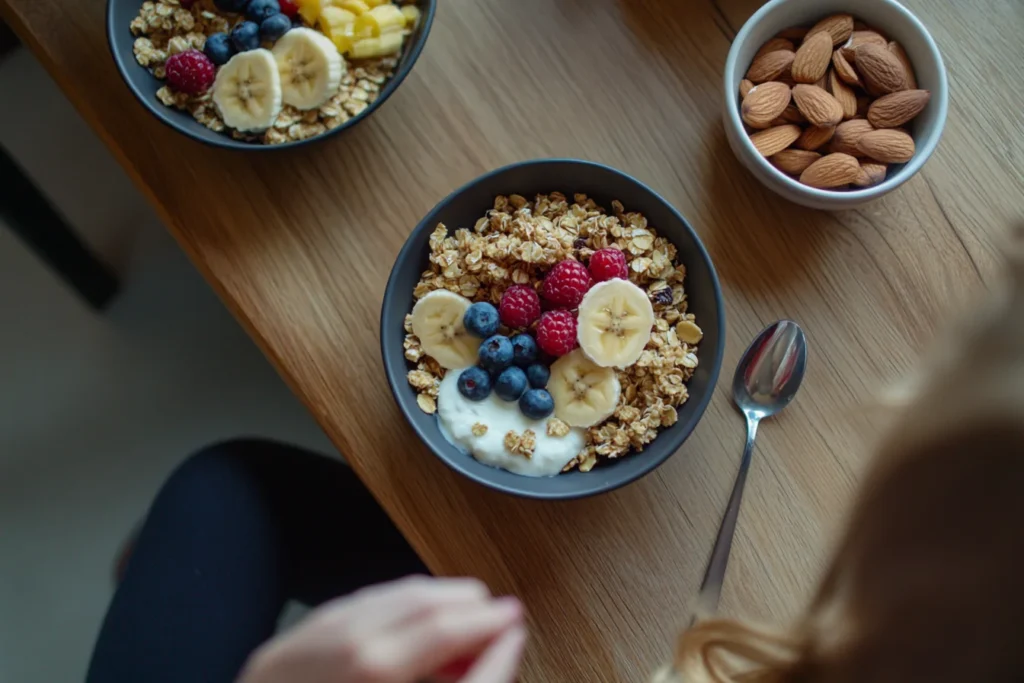
While boxed cereals can be convenient, they’re not your only option. Making your own breakfast cereal alternatives can help you control the ingredients, boost nutrition, and skip added sugars or preservatives. Whether you’re trying to eat clean or avoid processed foods, here are some delicious, healthy options to start your day right.
Homemade Granola with Oats and Nuts
Homemade granola is one of the best DIY cereal options. When made properly, it offers fiber, healthy fats, plant based protein, and customizable flavor. Unlike store bought versions, which can be sugar bombs, homemade granola lets you choose how sweet you want it, and what ingredients go in.
Basic ingredients to include:
- Rolled oats (base)
- Nuts (almonds, walnuts, pecans)
- Seeds (chia, pumpkin, sunflower)
- Natural sweeteners (honey or maple syrup in small amounts)
- Coconut oil or olive oil
- Dried fruit (added after baking)
Bake the mixture in a thin layer at a low temperature (about 300°F or 150°C) for 30–40 minutes, stirring halfway. Let it cool to crisp up.
Best served with: milk, Greek yogurt, or dairy free alternatives.
Overnight Oats as a Cereal Replacement
If you want something fast, cold, and customizable, overnight oats are a fantastic cereal replacement. By soaking oats in liquid overnight, you get a creamy texture without cooking, perfect for busy mornings.
How to make it:
- ½ cup rolled oats
- ½ cup milk or plant based milk
- 1 tablespoon chia seeds or flaxseed
- A few slices of banana, berries, or apple
- Dash of cinnamon or vanilla extract
Let it sit in the fridge overnight, and it’s ready by morning. You can prep several jars at once for the week ahead.
Overnight oats are high in fiber, especially beta glucan (great for cholesterol), and keep you full for hours. They’re also naturally sweet if you add fresh fruit, meaning you can skip the sugar.
Quinoa or Millet Breakfast Bowls
Grains like quinoa or millet can be cooked and served like hot cereal. Unlike oats or wheat, they are gluten free and naturally rich in complete protein and minerals like magnesium, phosphorus, and iron.
Recipe idea:
- Cook ½ cup quinoa in 1 cup water
- Add cinnamon, nutmeg, or cardamom for flavor
- Top with almond butter, sliced bananas, and a drizzle of maple syrup
- Optional: add chopped walnuts or raisins
These warm bowls are perfect for cooler mornings and provide a satisfying, balanced meal. They also reheat well, so you can make a batch and enjoy throughout the week.
Kids and Cereal: What’s Best for Growing Bodies?
Cereal is often marketed to children, think bright colors, cartoon mascots, and sugary flavors. But many of these cereals are loaded with refined sugar, artificial colors, and nearly no real nutrition. Choosing the healthiest cereal for kids means prioritizing natural ingredients, fiber, and balanced macros to support energy and development.
Healthiest Cereals for Children
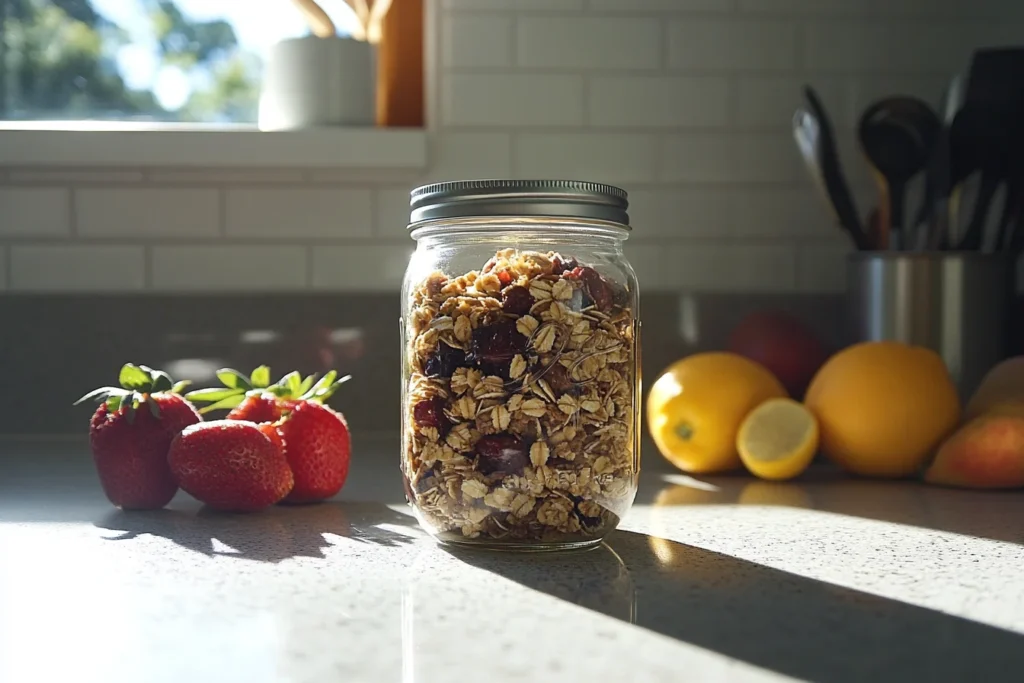
When shopping for children, consider cereals that are:
- Low in added sugar (5g or less per serving)
- High in whole grains
- Fortified with essential nutrients like iron, zinc, and B vitamins
- Free from artificial dyes and flavors
Top options for kids:
- Original Cheerios
- Barbara’s Puffins (Original or Multigrain)
- Nature’s Path EnviroKidz (low sugar organic cereals)
- Cascadian Farm Organic Purely O’s
- Kix (surprisingly low in sugar for a mainstream brand)
Pairing cereal with protein (like milk or nut butter) can help prevent sugar crashes and keep kids full longer.
Cereals to Avoid for Kids
Avoid cereals with:
- More than 8–10g of added sugar
- Bright artificial colors (often linked to behavioral issues in sensitive kids)
- Ingredients like high fructose corn syrup, BHT, or partially hydrogenated oils
Examples include Froot Loops, Cap’n Crunch, Cocoa Pebbles, and Trix. These are essentially candy disguised as breakfast.
Tip for parents: If your child is used to sweet cereals, slowly transition by mixing half sugary cereal with half of a low sugar option. Over time, reduce the sugary portion until they’re used to the healthier version.
Best Cereal Choices for Specific Diets
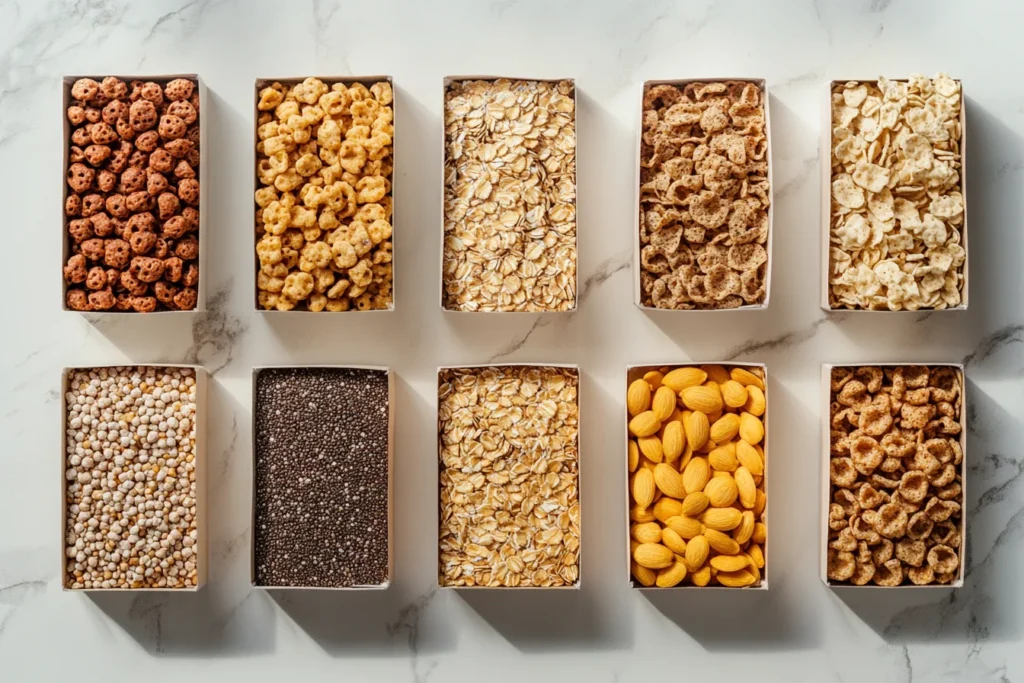
Cereal isn’t one size fits all. Depending on your dietary preferences or health needs, your “healthiest cereal” may differ from someone else’s. Here’s how to choose wisely based on your specific lifestyle.
Gluten Free Cereal Options
For those with celiac disease or gluten sensitivity, it’s essential to avoid wheat, barley, and rye. Fortunately, there are many tasty gluten free cereals made from rice, corn, quinoa, and certified gluten free oats.
Top gluten free picks:
- One Degree Sprouted Brown Rice Cacao Crisps
- Nature’s Path Mesa Sunrise
- Purely Elizabeth Ancient Grain Granola
- Love Grown Power O’s (made from lentils and chickpeas)
Always look for “certified gluten free” labels to ensure no cross contamination.
Low Carb and Keto Friendly Cereals
Low carb dieters need to steer clear of oats, wheat, and added sugars. There are several keto approved options now that use nuts, seeds, and natural sweeteners.
Best low carb cereals:
- Magic Spoon
- Catalina Crunch
- HighKey Protein Cereal
- DIY keto granola with coconut, flaxseed, almonds
Look for cereals with under 10g net carbs per serving, and sweetened with erythritol, stevia, or monk fruit.
Vegan and Plant Based Cereal Picks
Most cereals are plant based, but not all are 100% vegan, especially those containing honey, vitamin D3 (from animal sources), or dairy based coatings.
Top vegan cereals:
- Ezekiel 4:9
- Barbara’s Shredded Wheat
- Kashi 7 Whole Grain Nuggets
- Nature’s Path Flax Plus
Check for vegan certification or scan the ingredient list for honey, whey, or animal derived additives.
Frequently Asked Questions
Which cereal has the least sugar?
The lowest sugar cereals include Ezekiel 4:9, Post Shredded Wheat, Fiber One Original, and Uncle Sam Original, each with 0g to 1g of sugar per serving.
Is oatmeal healthier than boxed cereal?
Yes, plain steel cut or rolled oats are typically healthier than most boxed cereals. They’re whole, unprocessed, free of added sugar, and rich in fiber. However, some boxed cereals made from whole grains can also be nutritious when minimally processed.
Can I eat cereal every day and still be healthy?
Absolutely, if you choose the right cereal. Pick low sugar, high fiber options with whole grains, and pair it with milk or yogurt and fresh fruit. It’s all about balance and ingredients.
What cereal is best for weight loss?
High fiber, high protein cereals are best for weight loss. Kashi GoLean, Fiber One, and plain oatmeal help keep you full and control appetite. Avoid cereals with added sugars or processed carbs.
What’s the healthiest cereal for diabetics?
Diabetics should look for low glycemic index cereals with no added sugars and high fiber. Top choices include steel cut oats, Cheerios, Shredded Wheat, and Grape Nuts. Always check for blood sugar impact and portion sizes.
What makes a cereal processed or unprocessed?
Unprocessed cereals are made from whole food ingredients with little to no refining, like oatmeal or Shredded Wheat. Processed cereals often contain artificial flavors, refined sugars, and preservatives. The fewer ingredients, the less processed it is.
If you’re trying to pick the healthiest cereal, check out our Cereal Guide: Types, Benefits, and How to Choose for a deeper breakdown. For a fiber packed breakfast alternative, try these Banana Oatmeal Muffins. And if you’re going gluten free, our Gluten Free Irish Soda Bread is a great option. Prefer something heartier? This Healthy Breakfast Burrito hits the spot.
Conclusion: Which Cereal Is The Healthiest?
So, which cereal is the healthiest? The answer depends on your goals, but the formula remains consistent: focus on whole grains, high fiber, low sugar, and recognizable ingredients. Whether you’re going plant based, gluten free, or low carb, there’s a cereal that can fit your needs without compromising on taste or nutrition.
Reading labels carefully, avoiding added sugars, and staying clear of overly processed options are key steps toward a healthier breakfast. You don’t need to give up convenience, you just need to be smarter about your choices. Let your morning bowl fuel your day, not drain it.
